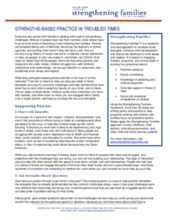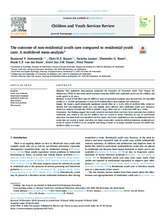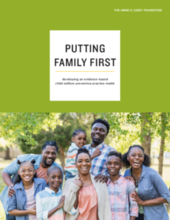Displaying 61 - 70 of 437
The authors of this study analyzed data from a randomized clinical trial of the middle school version of the Keep Safe intervention - an intervention that targets delinquent peer affiliation - in a sample of girls in foster care. The researchers found that the middle school Keep Safe intervention shows promise as a preventative intervention for reducing affiliation with delinquent peers, which importantly is associated with adolescent delinquent behavior.
This tool is meant to help practitioners stay grounded in family strengths as a way to overcome challenges and help families thrive even when the current COVID-19 crisis is weighing heavily on practitioners' and families' minds.
A cost analysis was conducted as part of a 5-year, federally funded statewide demonstration project to install universal trauma screening in one U.S. state’s child welfare system.
This article provides a conceptual depiction of how schools and treatment foster parents partnerships can be formed and maintained.
This multilevel meta-analysis compared the outcomes of Treatment Foster Care Oregon for Adolescents (TFCO-A) and home-based treatment programs (HBT) with residential youth care for children and youth aged 0 to 23 years.
This paper from the Annie E. Casey Foundation provides guidance for state child welfare agencies on what to consider when developing a preventive practice model that aligns with the requirements of Family First, addresses the unique needs of families within local communities and ensures that selected programs and practices are feasible to implement with quality.
In this webinar, veteran online instructors help identify steps to move online and strategies for adapting the lessons already in motion to this new format.
In this chapter, the authors describe the scale-up and impact of a linked multilevel intervention in a public child welfare system.
This presentation explores the structures and programs one university system is creating for college students emerging from foster care (SEFC).



